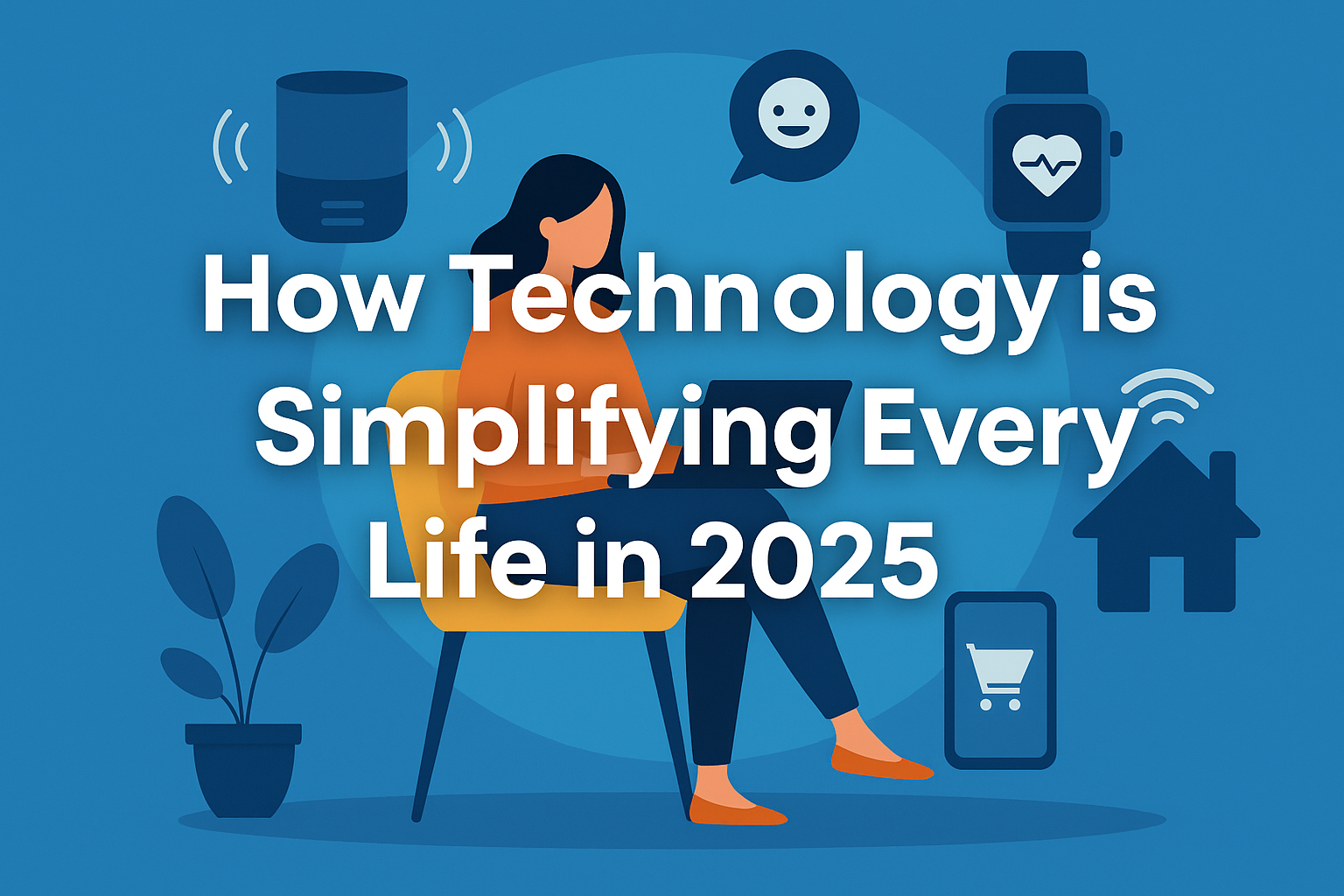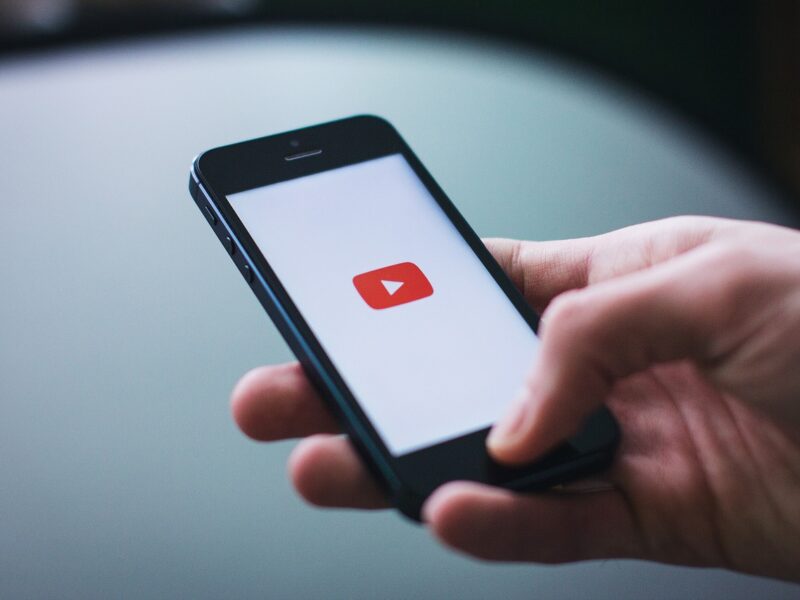Imagine waking up in the morning and your home already knows what to do. The lights gently brighten to mimic sunrise, your favorite playlist starts playing softly, and the coffee machine begins brewing your usual cup—no commands needed. Welcome to 2025, where technology isn’t just smart—it’s intuitive, helpful, and integrated into nearly every aspect of daily life.
We’re living in an era where technology is no longer a distant innovation reserved for tech enthusiasts. It’s personal. It’s practical. And most importantly, it’s making everyday life more efficient, comfortable, and connected. Whether you’re working from home, managing a family, or just trying to make your life a little smoother, chances are technology is playing a quiet but crucial role.
Let’s take a deeper dive into how everyday routines are getting an upgrade—one smart solution at a time.
1. Smart Homes: The New Normal
In 2025, smart homes aren’t just a luxury—they’re becoming the standard. Thanks to affordable devices and user-friendly interfaces, more people are automating their living spaces to increase comfort, save time, and reduce energy consumption.
Think about it: no more rushing back home because you forgot to turn off the lights or worrying about leaving the AC running all day. With just a tap on your phone—or a voice command—you can control everything from lighting and temperature to security cameras and kitchen appliances.
Smart thermostats learn your preferences and adjust accordingly. Smart fridges can suggest recipes based on what’s inside. And even your vacuum cleaner can schedule its own cleaning time. Technology has turned our homes into personal assistants, freeing us to focus on the things that truly matter.
2. Personal Assistants That Actually Assist
Remember when voice assistants like Alexa or Siri felt like novelty items? Fast forward to today, and they’ve evolved into essential parts of our daily routines. AI-driven assistants can now manage your calendar, answer complex questions, control devices, and even offer reminders based on your habits.
Woke up late? Your assistant can adjust your meetings, send a message to your coworkers, and suggest the fastest route to your next appointment. Cooking dinner? Ask it to find a recipe, play a podcast, or control the kitchen lighting while your hands are covered in flour.
These tools aren’t just reactive—they’re predictive. That’s the magic of AI in 2025: it learns from you and adapts to your needs without constant input.
3. Work From Anywhere: The Remote Revolution
For many of us, the COVID-19 pandemic in the early 2020s redefined what work looks like. But by 2025, remote work has matured into a flexible, highly supported experience powered by technology.
Collaboration tools like Zoom, Slack, and Notion are now more intuitive, secure, and feature-rich. Virtual workspaces simulate real office environments, allowing teams to interact in immersive ways using augmented reality (AR) or even holographic meetings.
Need to brainstorm? Whiteboard tools make it possible to sketch ideas live with colleagues across the world. Need focus time? AI-powered apps can manage notifications, adjust music for concentration, and even remind you to take breaks.
It’s not just about working from home anymore—it’s about working from anywhere, with the tools you need to stay productive and connected.
4. Health at Your Fingertips
If there’s one area where technology has made huge strides, it’s healthcare. From smartwatches that track your heart rate and sleep to AI-powered apps that detect early signs of illness, our health is literally in our hands.
In 2025, wearable tech goes beyond step counting. These devices now offer real-time health monitoring, stress level detection, and personalized fitness coaching. They even connect to your doctor’s system, allowing for remote check-ups and early intervention.
Telehealth has also come into its own. You can schedule a virtual appointment, share your vitals from home, and get prescriptions without setting foot in a clinic. For people in rural areas or with mobility issues, this kind of access is life-changing.
Even mental health is getting the tech touch—apps with AI-based mood trackers, mindfulness exercises, and virtual therapy sessions are helping more people access care discreetly and affordably.
5. Transportation Gets Smarter
Commuting used to be a daily headache. But now? It’s smoother, faster, and more predictable.
Ride-sharing services use AI to optimize routes in real time, reducing traffic congestion and wait times. Public transport apps offer live updates, alternate routes, and even occupancy levels to help you avoid crowded rides. Electric scooters and bikes have become a common sight in cities, and they’re easily rentable via smartphone apps.
And of course, self-driving cars are inching closer to becoming mainstream. While full autonomy isn’t yet widespread, assisted driving technologies are making roads safer. Cars can now park themselves, detect potential collisions, and alert you when you’re distracted.
For those with disabilities or elderly people, these advancements mean greater independence and freedom.
6. Learning Without Limits
Education has undergone a quiet revolution. With digital classrooms, on-demand courses, and interactive content, learning has never been more accessible or personalized.
Children use tablets with AR to explore historical events in 3D or simulate science experiments safely at home. Adults can pick up new skills on platforms like Coursera or Udemy, often for free or at low cost. AI tutors provide real-time feedback, personalized quizzes, and adaptive learning paths based on your performance.
Even traditional classrooms are benefiting from this tech wave. Teachers now have access to digital tools that help them track progress, engage students with multimedia content, and connect with parents instantly.
Whether you’re 8 or 80, there’s a learning opportunity waiting for you—tailored to your pace, interests, and goals.
7. Shopping and Payments Made Seamless
Remember the days of long checkout lines and fumbling for cash? In 2025, shopping is all about speed, ease, and personalization.
With one-click online ordering, same-day delivery, and personalized product suggestions, your next purchase is often just a few taps away. Augmented reality lets you “try on” clothes or preview furniture in your home before buying. Grocery apps let you scan items in-store and pay from your phone, skipping the checkout line entirely.
Digital wallets and contactless payments are standard, with biometric security (like fingerprint or facial recognition) ensuring safe transactions. Even small street vendors now accept UPI, PayPal, or QR-based payments.
Technology hasn’t just changed how we shop—it’s redefined convenience.
8. Entertainment That Moves With You
Gone are the days of waiting for your favorite show to air or buying physical CDs. Streaming platforms, personalized playlists, and on-demand content have made entertainment more mobile and more personal.
In 2025, smart TVs suggest shows based on your mood. Music apps analyze your listening habits to serve up the perfect soundtrack for your day. Virtual concerts and immersive AR games offer experiences that feel more interactive than ever before.
Even reading has gone digital. E-readers, audiobooks, and podcast platforms give you endless content on the go, whether you’re commuting or winding down before bed.
Technology has turned entertainment into a personal companion—always available, always tailored to you.
9. A More Sustainable Lifestyle
One of the quiet wins of technology is its contribution to sustainability. From reducing paper usage to managing energy consumption, tech is helping us live more responsibly.
Smart appliances optimize electricity and water usage. Apps can help track your carbon footprint or find eco-friendly alternatives to products. Electric vehicles (EVs) are becoming more affordable, with better charging infrastructure making them a viable option for the masses.
Even food waste is being addressed. Apps let users share excess food with neighbors, find discounted items nearing expiration, or track freshness at home.
With climate change a growing concern, technology is proving to be a valuable ally in building a greener future.
Final Thoughts: It’s About Living Better
At its core, technology in 2025 isn’t about flashy gadgets or futuristic dreams—it’s about living better. It’s about reclaiming your time, reducing friction in daily tasks, and having the freedom to focus on what truly matters: family, health, learning, and personal growth.
Sure, there are still challenges—privacy concerns, tech addiction, and accessibility issues remain. But as long as innovation continues with people at its center, the future of technology is a hopeful one.
As we look ahead, one thing’s clear: life isn’t just getting more digital—it’s getting more human, too.



